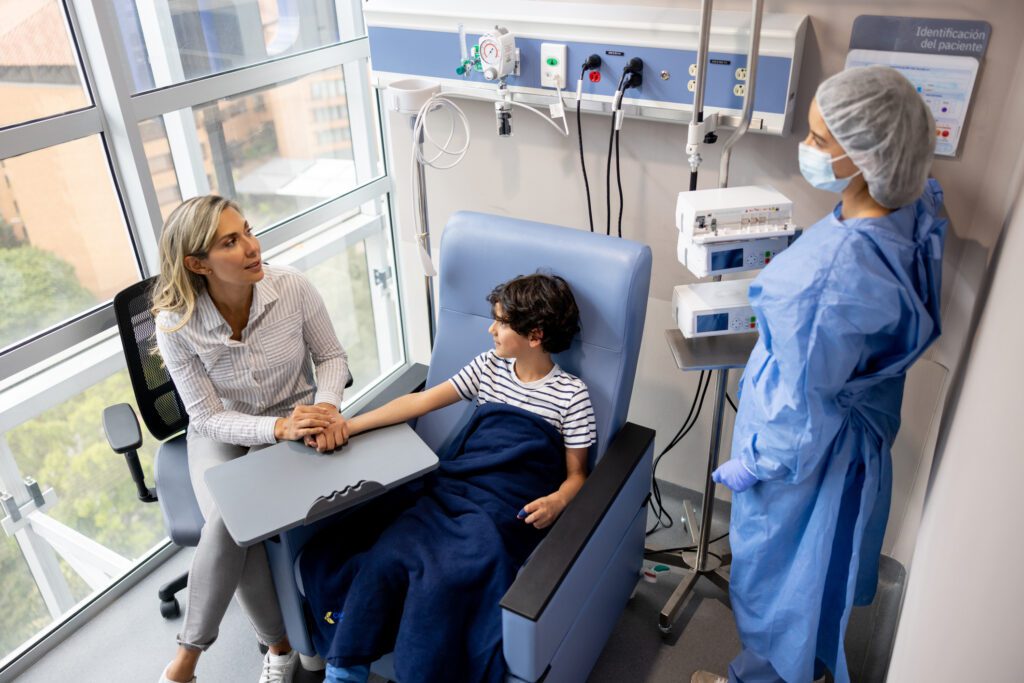February 28 is Rare Disease Day, and in observance, the Biotechnology Innovation Organization (BIO) is highlighting how it is working with member companies to address some of the most pressing needs in the rare disease community.
There are more than 10,000 rare diseases documented today, and while the patient population of any given disease might be small on its own, the rare disease community as a whole is quite large. Approximately 1 in 10 Americans have a rare disease, and approximately half of all rare disease patients are children. BIO and its members have shown a great interest in the rare disease drug development pipeline and prioritize the treatment and ultimate goal of curing the many diseases that affect millions of patients.
Case in point: the work that BIO and its members are doing with the Food and Drug Administration (FDA) Rare Disease Innovation Hub, which was created thanks to advocacy from many organizations and rare disease patient communities. In the few months since its creation, the Hub has already meaningfully engaged patients and partners like BIO, culminating in the release of its Strategic Agenda for 2025 on January 15. The collaboration is a distinct cause for optimism despite a difficult drug development landscape.
“BIO and our members are very excited about the launch of the FDA Rare Disease Hub and that many of our recommendations and feedback were incorporated into their Strategic Agenda,” said Dr. E’Lissa Flores, Ph.D., BIO’s Director of Science & Regulatory Affairs, who leads BIO’s Rare Disease portfolio. “As we look to our own goals and priorities for the year, we are very much aligned with the Hub initiative.”
How the FDA Rare Disease Innovation Hub agenda was set
In anticipation of the 2025 Strategic Agenda, the Reagan-Udall Foundation and the FDA co-hosted a stakeholder meeting where the FDA received input on what the Hub should prioritize. Dr. Flores represented BIO in the October 2024 meeting.
One ongoing theme that BIO pushed, and the Hub heeded, was that it should act as a meeting point for all stakeholders to learn from each other collaboratively, whether it is to further science and innovation, to clarify regulatory standards and processes, or anything in between.
How the FDA Rare Disease Innovation Hub will strengthen rare disease drug development
At the October meeting, Flores noted the “pressing need for coeducation across and among the FDA leaders and with external experts in the field,” especially given the high number of rare diseases and the fact that each rare disease poses its own unique set of challenges and opportunities. The Hub is in a unique position to facilitate these ongoing educational opportunities and act as a confluence point for rare disease partners—federal, patient, regulatory, and industry alike.
As a result, the FDA could empower decision-makers with “a deeper understanding of the underlying science, leading to more informed evaluations of drug application,” said Flores. “The Hub could be a catalyst for scientific research and innovation” by advancing “novel approaches” such as real-world evidence, natural history studies, and innovative clinical trial designs.
The FDA heeded BIO’s recommendation, citing one of its goals as “further advancing regulatory science of rare disease therapies.”
“The [Hub] will design and implement multi-partner education and engagement opportunities,” the FDA states, “to engage and collectively educate about novel approaches to therapy development for rare diseases. These engagement opportunities will create a platform for sharing expertise and promoting alignment on complex scientific challenges, evolving science, and novel clinical trial approaches, particularly for issues common to multiple diseases or a class of diseases.”
The Hub also prioritizes “gaps analysis for rare disease community educational materials,” noting that in 2025, it will “work with members of the rare disease community, including patient organizations and drug developers, to serve on an informal educational materials committee that will assess FDA-wide rare disease educational materials and define gaps and redundancies in those materials.”
This is part of the commitment to “create a centralized point of contact for external partners.”
‘A clear framework for the Accelerated Approval Pathway’
Another goal that Flores outlined in October was “to create a clear framework for the Accelerated Approval Pathway and how to best utilize surrogate endpoints and biomarkers.” In tandem with the Hub’s educational offerings, Flores proposed workshops and forums.
The first goal of the 2025 Strategic Agenda is the Hub’s commitment to creating and enhancing “opportunities for consideration of novel endpoints, biomarker development and assays, innovative trial design, real world evidence, and statistical methods,” as well as initiating “engagement with federal research partners and the broader rare disease research community with the purpose of sharing scientific innovations and enhancing collaboration in regulatory science.”
“This is an amazing and big win for the rare disease patients and community that BIO fully supports,” said Flores, “because the Hub is situated in a unique position to collaborate with the rare disease community and the multi-sector organizations to really address the deeper understanding necessary for scientific research and education to advance health outcome for rare disease patients.”
Coordination and consistency across FDA centers
Additionally, the Hub took into account BIO’s recommendation to improve coordination and consistency within and across all FDA centers.
“One of our priorities was that we wanted the Hub to address the inconsistencies across the federal regulators—and how they review applications and give regulatory flexibility,” said Flores. “We proposed a system where these agencies could cross-talk with each other, learn from each other, and share best practices—that will move the whole review process forward.”
In response, the Hub prioritized promoting “knowledge-sharing around rare disease treatment review between CDER (Center for Drug Evaluation and Research) and CBER (Center for Biologics Evaluation and Research).”
“One aspect of that vision is ensuring that our comprehensive drug reviews are conducted within the context of other applications, approval decisions, and related information within the Agency,” states the Hub agenda, “particularly when it comes to innovative approaches in the areas of novel endpoints, biomarker development, and trial designs for rare diseases.”
The adoption of these recommendations and others signals a notable win for not just BIO and its members but also rare disease patients.
Rare Disease Day 2025 and beyond

Now that the Hub Agenda has been set, all eyes are on the future for the Hub and seeing through the important next steps this year.
The Hub has already committed to launching three pilot workshops under the Rare disease Innovation, Science, and Exploration (RISE) series, with the first workshop focusing “on the design of clinical trials when you have a small and diminishing population of eligible trial participants.” BIO is committed to helping execute and facilitate these workshops.
Though the event has been postponed, BIO will also participate in FDA-NIH Rare Disease Day 2025 once it is rescheduled and will have a booth at the NIH Main Campus (Natcher Conference Center).




